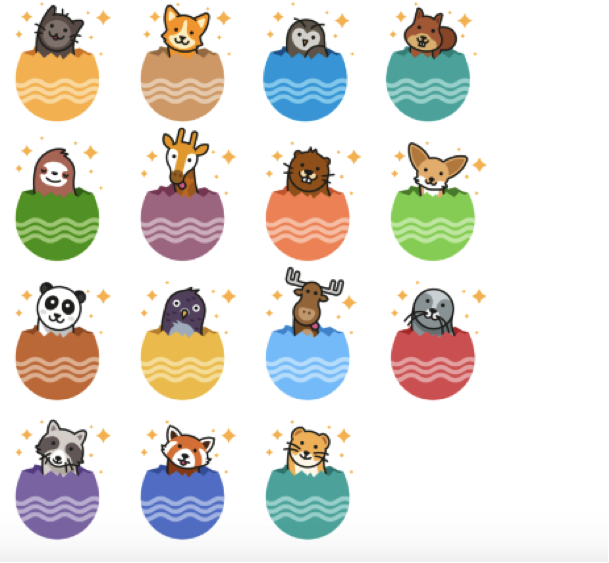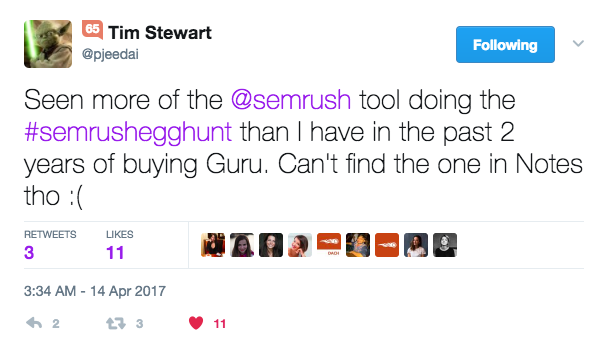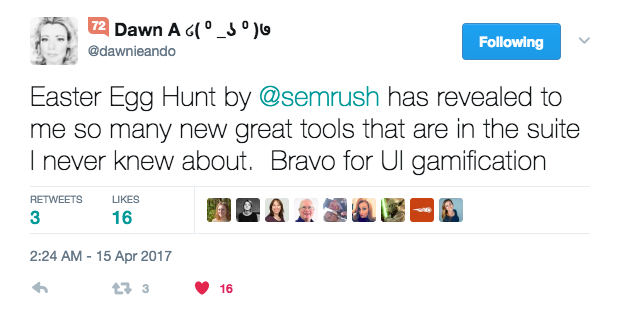What is the best way to learn? Many think through interactive activities and games. In fact, some of the most memorable lessons we learn are through games.
If you want to “grow” your customers into advanced users of your product, gamification can be the creative solution you are looking for.
Gamification is a very basic concept that has been around for some time. And, marketers have been using gamification techniques since the very first shop owner decided to implement an incentive to trigger the word-of-mouth as a way to promote his products.
Gamification is a way to apply gaming elements - fun and competition - to a non-gaming activity. You are basically telling your customers that your brand can be fun, different, and creative while retaining all of its qualitative characteristics. Lately, it seems like marketers are leveraging gamification tactics to a whole new degree. According to a survey from Boston Retail Partners, 87% of retailers will use gamification marketing within the next three years. Why? Gamification is not only about fun, but it can actually help marketers and business owners achieve certain goals. And if smartly executed, the results can be very impressive.
Thus, we, at SEMrush, could not resist giving it a try. What we have seen was a huge success and great outcomes for both our users and our brand. After all, our Easter Egg Hunt game was among the nominees for the UK Social Media Communications Awards as the Best Use of Twitter and for the DADI Awards in “B2B sector website, app or campaign” category.
Easter Egg Hunt: A Brief Recap
To give you a basic idea of what we did, we will sketch out the game our team came up with. During the Easter season, we released a game, directly built into our interface - an Easter Egg Hunt. We challenged our users to find 15 Easter eggs, hidden anywhere within our platform. To collect the egg, a user had to set up a project, create a report, or basically perform any action that showed off the functionality of our diverse tools.
For our users, the game was an entertaining yet valuable activity, because they could learn something new about the tool they already use. Moreover, gamification showed that a technical manual could be turned into something fun, challenging, and rewarding.
To keep the competitive spirit around and attract more people, we also offered a symbolic reward - a list of top 10,000 most searched keywords for 10 countries.
We sent out an email to our existing users and announced the game across our Social Media channels. No PPC, content marketing, or influencer outreach. We used what we had right there at hand.
Here is a short video of how it all looked:

The Easter Egg Hunt has so far been our most successful digital marketing campaign in terms of reach in social media. Our users had lots of fun and learned a great deal about our platform, while we received more engagement with a wide range of tools that were underused before.
After the campaign, we spent some time to reflect on this success and identified some key success factors. So we would like to share some insights on how to effectively incorporate gamification into your digital marketing. Game on!
Gamification Marketing Strategy: A Step-by-Step Guide
#1. Define Your Goals & Target Audience
As with any other marketing campaign, your gamification efforts should start with a clearly defined goal and target audience. Both of these choices will largely rely on the problem you want to solve with your campaign: are you lacking visibility across Social Media? Are you trying to increase your customer retention? Or, are you intending to drive more sales for Q4? and so on.
It can be challenging to determine the problem. The greatest technique out there was invented by Toyota’s legendary systems architect, Taiichi Ohno. The “Five Whys” approach should help you uncover the root cause of the issue your company is facing.
Once you establish your challenge, set a goal that would solve your issue-of-choice. According to OgilvyRED, gamification marketing can have the following end goals:
To build brand awareness
To increase engagement
To drive conversions
To boost customer loyalty
To encourage brand advocacy
It is up to you to pick the goal your business needs to meet, and only then can you define the target audience.
In our case, we wanted to educate our existing users on the different features of our product.
For SaaS companies, it is often most challenging to communicate the software’s full potential and value to the end user. Webinars, manuals, and how-tos should certainly be in place. However, if you want to stand out, offer something different and engaging, gamification is the way to go.

With a big load of updates, new products, and fresh features, we noticed that our customers are finding it hard to stay up to date with all the novelties we offer. Thus, gamification provided us with a new and creative solution to our problem. By increasing our users’ awareness of our platform’s wide functionality, we wanted to expand the number of tools people use and increase the overall engagement with the platform.

A total of 9,300 users took part in the game, and we have seen over 1,500 new activities on our user dashboards, with 30% of participants completing a new action. As a result, we have also noticed that those who took part in the hunt have started using more tools, and the overall engagement level has gone up to 25%.
Although conversions were never our end goal, the game resulted in 71 conversions.
#2. Make It Feel and Look Good
Choosing the right approach to gamification will heavily influence the campaign’s overall performance. But from what we have seen, picking game patterns your audience is familiar with is always more beneficial.
You can certainly invent a brand new game, but do note that it is unlikely that users will want to spend too much time figuring out what to do. So, take a game we all love and already can play and apply it to your campaign.
But, what you should really spend your time and efforts on is the visual aspect. You don’t have to overcomplicate things, simply make sure that your game looks appealing and worthy of sharing. Any gamification campaign should strive for virality, and both word-of-mouth and Social Media shares can get you there. But, as you know, people share what makes their feeds and, thus, them look good.
#3. Align Your Campaign With a Global Event
Another factor that can get you that virality you want has to do with making sure that your campaign is not an isolated event. Newsjacking, or holiday-jacking in our case, can substantially trigger your success. We chose Easter, so the Easter Egg hunt was an obvious game to offer. Most of our customers knew what the game involved, and we leveraged that opportunity.

So, when picking a popular holiday or a globally-recognized news story as the framework for your gamification campaign, make sure that you are not simply using and benefiting from the name of the event, but offer a related activity. Thus, a Valentine’s Day gamification could potentially involve a romance-related quiz; a Christmas campaign can promote your product by carol song lyrics, and so on. Get as creative as you can!
#4. Connect Different Departments to Work on Your Campaign
The key to creating a memorable and successful campaign is to build a dream team that will execute the task. A gamification campaign requires specialists with various areas of expertise: marketers, content managers, social media managers, developers, and product managers. You don’t have to spread the responsibilities across the entire staff. However, it is wise to pick experts from each department you might need help from.
Note that a forceful task allocation will not do. To inspire your workers to volunteer for being the part of the team, make sure that you clearly define campaign’s benefits for each department. If you need a lead developer to work on your project’s technical execution, tell him what value this campaign will bring to him and his team. In our case, we told our developers that this campaign would bring in a good amount of user feedback, highly needed to improve the product they have spent their time working on. More people will use the tool they have developed, and they will be able to spot its weakest points.
And, indeed, we did miscalculate - we have received 18 new user feedbacks about our platform since the launch of the campaign. Moreover, some tools that used to attract a relatively low number of users got suddenly rediscovered.

And when it comes to the marketing team members, first of all, underline the fun nature of the project; we marketers do appreciate some quality entertainment at work. Moreover, by setting the right goal and communicating it to the marketing team, you could see oceans of volunteers who are inspired to take part in the project and deliver the results.
#5. Success Factors
Every campaign will have different success factors. But there are a couple of areas that unite almost all gamification cases in marketing. These are the important aspects of gamification that should be in place for a great performance and user experience.
Competition
The willingness to compete is inherent to human nature. Allow your users to get into the spirit of competition, and you won’t have to invest a lot of cash to acquire people to take part in your game or get to its end.
People love-love to compete with themselves as well as with the others. So make sure to incorporate peer pressure by making it easy to exchange results, progress, and downs. In our case, people wanted to show off their level of expertise and excellent skills as advanced SEMrush users. Moreover, they simply wanted to share fun and some entertaining visuals with their friends and colleagues.
A reward is also a great incentive, and note that the actual value of the prize is not all that important. But do make sure that you are not overcomplicating the game. While it does not necessarily have to be easy, people should be familiar with the rules before they play and they should not spend ages reading the guidelines.
Virality
Virality often comes with Social Media. As we have mentioned above, the sharing option should be available at every stage of the user’s progress with the game. Create leaderboards, badges or any other form of shareable statement about the game.
What we also did, on the top of these basic steps, was create a special #semrushegghunt hashtag for Twitter. The hashtag got picked up, and we saw some impressive numbers:the Easter Egg Hunt has received over 8,000,000 impressions on Twitter, 2,444 tweets, and 2,330,802 unique users who were shown at least one tweet with the campaign hashtag. Moreover, 16% of those who played and tweeted about the hunt had over 1,000 followers.
News/holiday-jacking is another layer that will help your campaign go viral. This technique is as old as the hills. All the Christmas and Valentine’s Day ads don’t get aired for nothing. It works. Fact.
Customer Support
While virality is great - after all, you want to attract as many users as you can - there is a dark side to it. If you don’t have a dedicated customer support team working 24/7, you might face a lot of criticism. Make sure that you have a team in place that is ready to answer all the questions from your users across different channels.

For instance, we mainly relied on Twitter, so there were people working “Twitter shifts” during the entire campaign, including social media managers who were briefed about all the possible solutions they should offer if a problem occurred. Make your internal team communication easy - create a special Slack channel or a platform where answers can be found instantly and quickly given to the user.
In our case, we have created an internal Q&A sheet, where we anticipated and wrote down the most common questions that might pop up and the answers we can give. Moreover, our social media managers were constantly online, providing our users with help and even hints on how to get to the next level.
Mobile-Friendly Experience
The hardest angry message or tweet you can have during your gamification campaign is likely to come from outraged users who were very much willing to take part in your campaign, but could not do so because of the device they were using. No social media manager will be able to resolve this issue. Think of it from the very start. If you really want success, go mobile or don’t go anywhere at all. Especially, if you know that a significant part of your audience is using mobile or tablet devices.
Post-Campaign Nurturing
A campaign does not end with the end of the game. Any gamification campaign should be treated like a quiz. You should always think of those who did not fulfill the given task or were really challenged to do so. Provide people with answers once the fun has come to an end. Create a post that explains all the steps the user should have taken to come to the finish line, build a map that gives out a step-by-step analysis of the game, record a video - basically, explain how users could have gotten through the challenge. We created an infographic and dedicated a post that revealed the Easter Egg Hunt’s secrets. This will allow you to satisfy the user's’ curiosity and, as a cherry on the top, it will also allow you to show off your product one more time.
#6. Mistakes to Avoid
No matter how closely you go by the book, mistakes are unavoidable. During the campaign, you will always start spotting things that could have been built smoother, and areas that you should have thought through beforehand. However, this is a part of the deal with every marketing campaign.
We can only share two biggest mistakes we were faced with that you should never make in your gamification campaign:
Customizable Tweets
Although a technical issue, we have seen some disappointment over the fact that leaderboards people could share were not customizable. Our users wanted to write their own messages on tweets that reflected their activity. So if you have the technical option, try to provide that option along with a standard “Hey, I’ve completed the X challenge” message. This is especially relevant for users with a substantial Social Media presence - they probably prefer to make every tweet or Facebook post more personal.
Built-in Progress Bar
Unless you are creating a one-step game, building a progress bar is essential. We created quite a challenging and yet entertaining quest but did not have the opportunity to install a progress bar. Thus, users could not always keep track of their achievements and sometimes dropped the game somewhere in the middle. Although the game was a great success, a lack of progress bar has influenced our campaign’s bounce rates. So make sure that your users can see their achievements in real time at all times.
Final Words
All in all, there is no particular set of rules to what makes a perfect gamification campaign. It is only up to you to identify your own success factors and leverage them to your campaign’s success. Hopefully, this guide will help you define the areas you should pay attention to before, while, and after the launch of the game.
Game over!
Here are some other fun thematic campaigns we used at SEMrush to promote our business - be sure to check them out!
Innovative SEO services
SEO is a patience game; no secret there. We`ll work with you to develop a Search strategy focused on producing increased traffic rankings in as early as 3-months.
A proven Allinclusive. SEO services for measuring, executing, and optimizing for Search Engine success. We say what we do and do what we say.
Our company as Semrush Agency Partner has designed a search engine optimization service that is both ethical and result-driven. We use the latest tools, strategies, and trends to help you move up in the search engines for the right keywords to get noticed by the right audience.
Today, you can schedule a Discovery call with us about your company needs.
Source:





